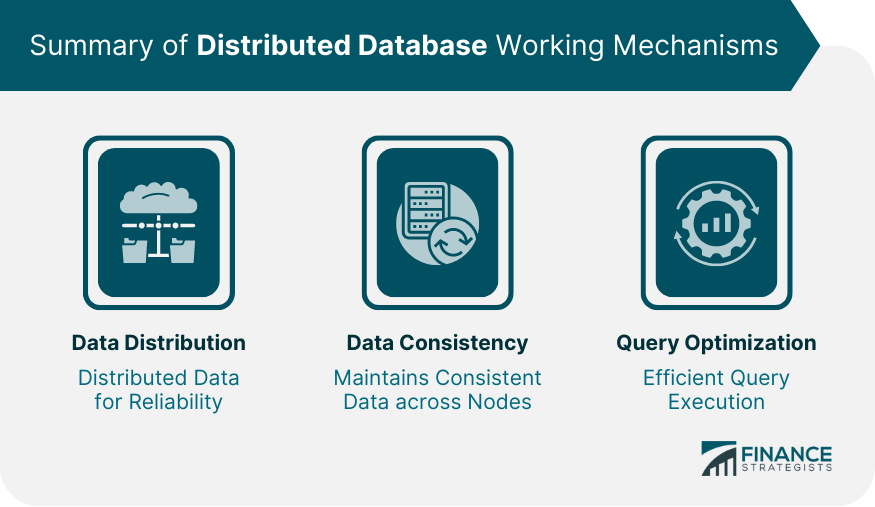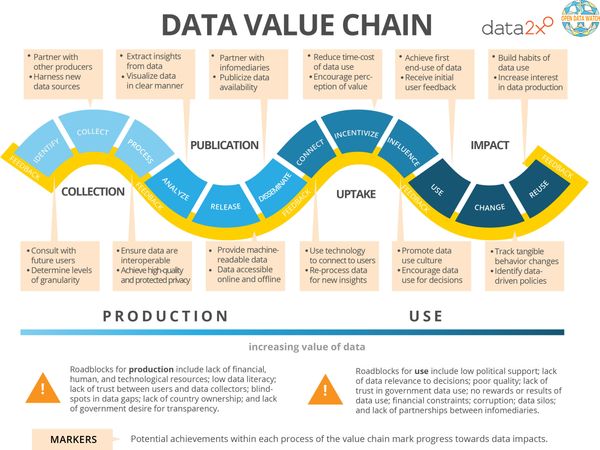Overview
Importance of maintaining high-performance databases
Maintaining high-performance databases is crucial for the smooth operation of any organization. A high-performance database ensures that data can be accessed and retrieved quickly and efficiently, leading to improved productivity and customer satisfaction. One of the key aspects of maintaining high-performance databases is database optimization. Database optimization involves fine-tuning the database structure, indexes, and queries to enhance performance and minimize resource usage. By optimizing the database, organizations can experience faster response times, reduced downtime, and increased scalability. Implementing database optimization techniques is essential for businesses that handle large amounts of data and rely heavily on database systems for their operations.
Common challenges in maintaining high-performance databases
Maintaining high-performance databases can be a challenging task for any organization. There are several common challenges that database administrators often face. One of the key challenges is ensuring data fidelity, which refers to the accuracy and consistency of data stored in the database. Another important challenge is the importance of maintaining high-performance databases for the overall efficiency of the organization. Organizations like Rakuten understand the significance of high-performance databases and invest in strategies to overcome these challenges. By addressing these challenges, organizations can ensure that their databases perform optimally and support their business operations effectively.
Benefits of optimizing database performance
Optimizing database performance offers several benefits. One of the key benefits is improved database error detection. By optimizing the performance of the database, it becomes easier to identify and resolve any errors or issues that may arise. This ensures that the database operates smoothly and efficiently, minimizing any potential disruptions or downtime. Additionally, optimizing database performance can lead to faster query execution times, resulting in improved overall system performance. By addressing bottlenecks and inefficiencies, the database can handle larger volumes of data and user requests without experiencing performance degradation. This scalability is crucial for businesses that deal with growing amounts of data and need their databases to keep up with the increasing demands. Overall, optimizing database performance is essential for maintaining a high-performing and reliable database system.
Tip 1: Regularly Monitor Database Performance

Setting up monitoring tools
Setting up monitoring tools is crucial for maintaining high-performance databases. It allows database administrators to proactively identify and resolve any issues that may impact the performance and availability of the databases. Monitoring tools provide real-time insights into the health and performance metrics of the databases, allowing administrators to detect and address potential bottlenecks, optimize query performance, and ensure data integrity. With the increasing importance of healthcare CIO’s actions during a ransomware attack, having robust monitoring tools in place becomes even more critical. These tools can help healthcare organizations quickly identify and respond to any security breaches, ensuring the protection of sensitive patient data. By investing in the right monitoring tools, healthcare CIOs can effectively safeguard their databases and mitigate the risks associated with ransomware attacks.
Analyzing performance metrics
Analyzing performance metrics is crucial for maintaining high-performance databases. By closely monitoring key metrics such as response time, throughput, and resource utilization, database administrators can identify bottlenecks and optimize database performance. One important aspect to consider is the potential conflict of interest that may arise when balancing the needs of different stakeholders. It is essential to carefully manage and address any conflicts to ensure the smooth operation of the database system. By proactively analyzing performance metrics and addressing conflicts of interest, organizations can maintain high-performance databases that meet the needs of all stakeholders.
Identifying and resolving performance bottlenecks
Identifying and resolving performance bottlenecks is crucial for maintaining high-performance databases. One of the key factors in ensuring optimal performance is understanding the working mechanism of risk prediction models. By analyzing the behavior and patterns of data, these models can accurately predict potential risks and help in making informed decisions. Resolving performance bottlenecks involves identifying any issues or inefficiencies in the database system and taking appropriate measures to address them. This can include optimizing queries, improving indexing strategies, and allocating sufficient resources. By proactively addressing performance bottlenecks and leveraging risk prediction models, organizations can ensure the smooth and efficient operation of their databases.
Tip 2: Optimize Database Indexing

Understanding database indexes
Understanding database indexes is crucial for optimizing the performance of your database. Indexing techniques play a vital role in improving query performance and reducing the time it takes to retrieve data. By creating indexes on the appropriate columns, you can significantly speed up the search process and enhance overall database efficiency. Additionally, indexing techniques enable you to handle large amounts of data more efficiently, ensuring that your database can handle high traffic and maintain optimal performance.
Choosing the right index type
Choosing the right index type is crucial for maintaining high-performance databases. The index type determines how the database organizes and retrieves data, which can greatly impact query performance. There are several factors to consider when choosing an index type, such as the size of the data, the type of queries that will be performed, and the specific requirements of the application. By carefully evaluating these factors, database administrators can ensure that the chosen index type optimizes query execution and improves overall database performance.
Regularly reviewing and updating indexes
Regularly reviewing and updating indexes is crucial for maintaining high-performance databases. Indexes play a critical role in database performance by enabling faster data retrieval and efficient query execution. By regularly reviewing and updating indexes, database administrators can ensure that the indexes are optimized for the current workload and data distribution. This helps improve query performance and overall system responsiveness. Additionally, regular index maintenance helps prevent index fragmentation, which can negatively impact database performance. Therefore, database administrators should prioritize the regular review and update of indexes to ensure optimal performance of their databases.
Tip 3: Efficient Query Optimization

Understanding query execution plans
Understanding query execution plans is crucial for optimizing database performance. Query execution plans provide a roadmap for how the database engine will process and retrieve data based on the given query. By analyzing the query execution plan, database administrators can identify potential bottlenecks and make necessary adjustments to improve query performance. Building followership is a key aspect of maintaining high-performance databases. With a strong followership, database administrators can effectively implement performance tuning strategies and ensure the smooth operation of the database system. By continuously monitoring and analyzing query execution plans, administrators can proactively identify and resolve performance issues, resulting in a highly efficient and responsive database environment.
Using appropriate indexing for queries
Using appropriate indexing for queries is crucial for maintaining high-performance databases. One important aspect of this is fine-tuning database parameters. By optimizing the parameters, you can improve the efficiency and speed of query execution. Fine-tuning involves adjusting settings such as buffer sizes, cache configurations, and query optimization techniques. These adjustments ensure that the database is able to handle large volumes of data and complex queries effectively. Additionally, fine-tuning helps in reducing query response time and improving overall system performance. Therefore, it is essential to regularly review and adjust the database parameters to ensure optimal performance.
Rewriting complex queries for better performance
Rewriting complex queries for better performance is a crucial aspect of maintaining high-performance databases. By optimizing and simplifying complex queries, database administrators can significantly improve the overall efficiency and responsiveness of the database system. This process involves analyzing the existing queries, identifying bottlenecks, and restructuring them to enhance performance. Mark Wahlberg fitness classes are a great example of how rewriting complex queries can lead to better performance. By employing advanced query optimization techniques, such as indexing and query rewriting, the database can efficiently retrieve and process data related to fitness classes offered by Mark Wahlberg. This not only improves the speed of query execution but also enhances the user experience by providing accurate and up-to-date information about fitness classes. Overall, rewriting complex queries is an essential strategy for achieving and maintaining high-performance databases.
Tip 4: Implement Database Caching

Caching frequently accessed data
Caching frequently accessed data is crucial for maintaining high-performance databases. By storing frequently accessed data in a cache, database systems can reduce the need to retrieve the same data from disk repeatedly, resulting in faster response times and improved overall performance. In addition, caching can help alleviate the load on the underlying storage system, allowing it to focus on handling more complex and resource-intensive operations. To achieve optimal caching, it is important to use top data transfer tools 2023 that can efficiently move data between the cache and the database. These tools enable seamless and efficient data transfer, ensuring that the most frequently accessed data is always readily available in the cache for quick retrieval. By leveraging these tools, database administrators can effectively enhance the performance and responsiveness of their databases.
Choosing the right caching strategy
Choosing the right caching strategy is crucial for maintaining high-performance databases. One important aspect to consider is the use of SQL for data updating. By utilizing SQL, you can efficiently update and modify data in your database. This allows for faster and more accurate updates, improving the overall performance of your database. Additionally, SQL provides a wide range of features and functionalities that can be leveraged to optimize your caching strategy. By incorporating SQL into your caching strategy, you can ensure that your database operates at its highest performance level.
Managing cache invalidation
Managing cache invalidation is a crucial aspect of maintaining high-performance databases. One of the key considerations in this process is the management of on-premise infrastructure. With on-premise infrastructure, organizations have complete control over their hardware and software, allowing them to optimize performance and ensure data security. However, this also means that cache invalidation needs to be carefully managed to avoid any disruptions in database performance. By implementing effective cache invalidation strategies and regularly monitoring and updating the cache, organizations can ensure that their databases continue to operate at peak performance.
Tip 5: Regular Database Maintenance

Performing routine backups
Performing routine backups is crucial for maintaining the integrity and availability of your high-performance databases. By regularly backing up your data, you ensure that in the event of a failure or data loss, you can quickly restore your database to its previous state. Additionally, backups provide a safety net for testing new techniques for enhancing database speed without risking the loss of important data. Implementing robust backup strategies and adhering to a regular backup schedule are essential for the smooth operation of your high-performance databases.
Updating database software and patches
Updating the database software and applying patches is crucial for maintaining high-performance databases. It ensures that the database is running on the latest version, which includes bug fixes, performance improvements, and security enhancements. By regularly updating the software and applying patches, organizations can take advantage of new features and functionalities that can optimize their database performance. Additionally, updating the database software and patches is essential for ensuring cloud data governance best practices. It helps organizations comply with data regulations, maintain data integrity, and enhance data security in the cloud environment. Therefore, staying up to date with the latest software updates and patches is a key aspect of maintaining high-performance databases and implementing effective cloud data governance best practices.
Monitoring and optimizing database storage
Monitoring and optimizing database storage is crucial for maintaining high-performance databases. It involves constantly monitoring the storage capacity and usage of the database, identifying and resolving any storage-related issues, and implementing optimizations to improve performance. Transitioning from hype to reality with Zero-Trust is one of the key considerations in this process. Zero-Trust is a security framework that requires strict identity verification and access controls, regardless of whether the user is inside or outside the network perimeter. By implementing Zero-Trust principles in database storage, organizations can enhance security and protect sensitive data from unauthorized access. Additionally, Zero-Trust can help mitigate the risks associated with insider threats and external attacks. It is essential for organizations to stay updated with the latest advancements in Zero-Trust and adapt their database storage strategies accordingly to ensure high-performance and secure databases.
Conclusion

Importance of maintaining high-performance databases
Maintaining high-performance databases is crucial for businesses to unlock their full potential. A high-performance database ensures that data is readily available, allowing businesses to make informed decisions and respond to customer needs in real-time. Additionally, a well-maintained database enhances data security, protecting sensitive information from unauthorized access. By investing in the maintenance of high-performance databases, businesses can optimize their operations, improve efficiency, and ultimately maximize their business potential.
Key takeaways
The key takeaways from the article ‘5 Tips for Maintaining High-Performance Databases’ are: Choosing the Right Database for System Design in .NET. It is crucial to select the appropriate database for your system design in .NET. The choice of database can significantly impact the performance and scalability of your application. Consider factors such as data volume, query complexity, and transaction requirements when making this decision. By choosing the right database, you can ensure optimal performance and efficient data management in your .NET application.
Future trends in database performance optimization
Future trends in database performance optimization include the use of advanced algorithms and machine learning techniques to automatically tune database configurations for optimal performance. This can help improve query execution times and reduce resource utilization. Another trend is the adoption of cloud-based database solutions, which offer scalability, flexibility, and cost-effectiveness. Additionally, the use of in-memory databases is becoming more prevalent, as they can provide faster data access and processing speeds. Lastly, the integration of real-time analytics and data streaming capabilities into databases allows for more timely and actionable insights. Overall, these trends are aimed at enhancing the performance, efficiency, and reliability of databases in order to meet the growing demands of modern applications and data-intensive workloads.
In conclusion, OptimizDBA Database Optimization Consulting is the trusted industry leader in remote DBA services. With over 500 clients and a track record of delivering transaction speeds that are at least twice as fast as before, we guarantee a significant increase in performance. Our average speeds are often 100 times, 1000 times, or even higher! If you’re looking to optimize your database and experience improved transaction speeds, contact OptimizDBA today. Visit our website to learn more about our services and how we can help you achieve optimal performance.







